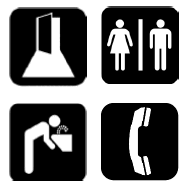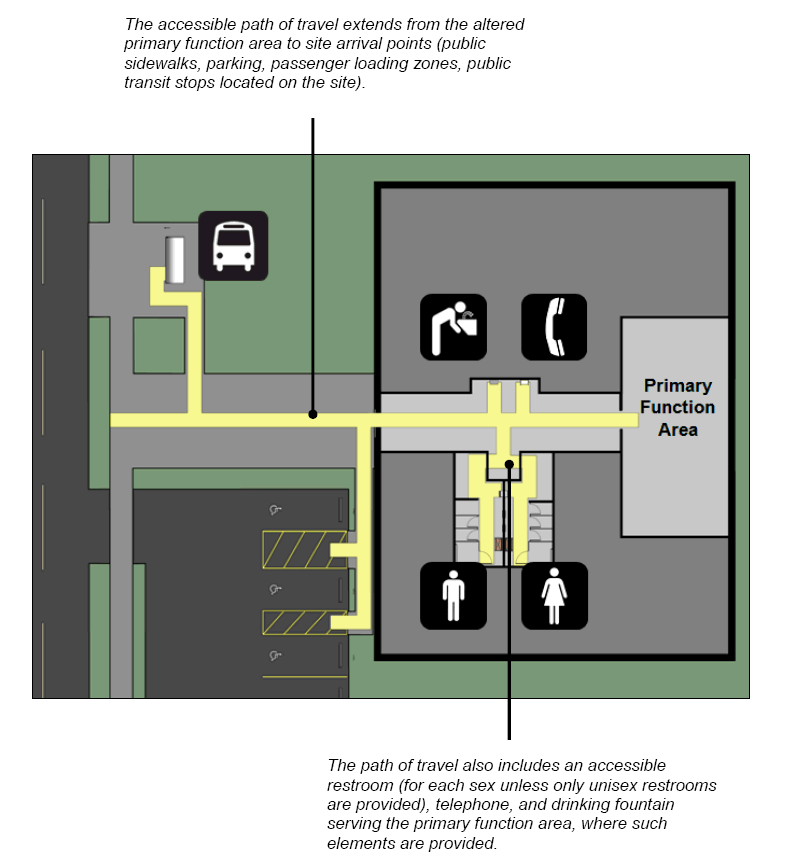Alterations Affecting Primary Function Areas [§202.4]
Additional requirements apply when alterations are made to areas containing a “primary function,” which is a major activity intended for a facility. Examples of primary function areas include dining areas of a restaurant, retail space in a store, exam rooms in a doctor’s office, classrooms in a school, and offices and other work areas where the activities of a covered entity are carried out. Spaces not considered primary function areas include entrances, corridors, restrooms, break rooms, employee locker rooms, and mechanical or electrical closets. Restrooms are not primary function areas unless their provision is the primary purpose of a facility, such as a highway rest stop. DOJ’s 2010 ADA Standards and DOT’s ADA regulations contain detailed provisions on alterations to primary function areas that must be applied in addition to section 202.4.
Accessible Path of Travel
When alterations are made to a primary function area, an accessible path of travel to the area must be provided. The accessible path of travel must extend from the altered primary function area to site arrival points, including public sidewalks and parking and passenger loading zones provided on the site. The path of travel also includes access to restrooms, telephones, and drinking fountains, where provided to serve the primary function area. In leased facilities, alterations made by a tenant to primary function areas that only the tenant occupies do not trigger a path of travel obligation upon the landlord with respect to areas of the facility under the landlord’s authority if those areas are not otherwise being altered.
Disproportionality (20%)
The accessible path of travel is required to the extent that it is not “disproportionate” to the total cost. Regulations implementing the standards define “disproportionate” as exceeding 20% of the total cost of alterations to the primary function area. The 20% cap applies only to costs associated with the accessible path of travel, including an accessible route to the primary function area from site arrival points, entrances, and retrofits to restrooms, telephones, and drinking fountains.
Prioritization
Compliance is required up to the point the 20% cost cap is reached, even where it does not result in a fully accessible path of travel. Where costs exceed this cap, compliance should be prioritized in this order:
1. an accessible entrance
2. an accessible route to the primary function area
3. restroom access
4. an accessible telephone
5. an accessible drinking fountain
6. access to other elements such as parking and storage
The requirements for alterations to primary function areas are found in DOJ’s ADA Standards at 28 CFR §35.151(b) (title II) and 28 CFR §36.403 (title III) and in DOT’s ADA Regulation at 49 CFR §37.43.
Accessible Path of Travel



User Comments/Questions
Add Comment/Question